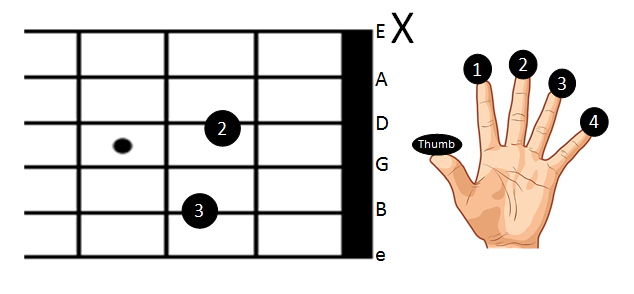
Here are some tips for mastering the A7 chord on the guitar:
1. Proper Finger Placement:
- Basic A7 Chord:
- Place your index finger on the 2nd fret of the 4th string (D string).
- Place your middle finger on the 2nd fret of the 2nd string (B string).
- Leave the 3rd string (G string) and 1st string (high E string) open.
- Strum from the 5th string (A string) down to the 1st string (high E string), avoiding the 6th string (low E string).
2. Alternative Fingering:
- Simplified A7:
- If you’re having difficulty, you can use just your index finger to press down the 2nd fret on the 4th string (D string) and let the other strings ring open.
3. Strumming Technique:
- When strumming, be careful not to hit the 6th string (low E string). Focus on strumming the strings you need to play to get a clean sound.
4. Check Each String:
- Strum each string individually to ensure each note rings clearly. If any string sounds muted or buzzy, adjust your finger placement.
5. Avoiding Muted Strings:
- Ensure your fingers are positioned correctly to avoid muting any strings unintentionally. This can be achieved by curving your fingers and keeping them close to the frets.
6. Practice Chord Transitions:
- Practice moving between the A7 chord and other chords like D major, E7, and C major. This will help you improve your chord-changing skills and build muscle memory.
7. Use a Metronome:
- Practice the A7 chord with a metronome to develop your timing and rhythm. This will help you incorporate the chord smoothly into your playing.
8. Incorporate into Songs:
- Play the A7 chord in the context of simple songs or chord progressions. This helps you understand how it functions within music and improves your practical application of the chord.
9. Focus on Finger Strength:
- Regularly practice finger exercises to build strength and flexibility. This will make it easier to press down on the strings and play the A7 chord cleanly.
10. Stay Relaxed:
- Avoid tension in your hand and fingers. Keeping your hand relaxed will help you play more comfortably and avoid strain or injury.
By following these tips and practicing regularly, you’ll be able to play the A7 chord confidently and use it effectively in various musical contexts.
